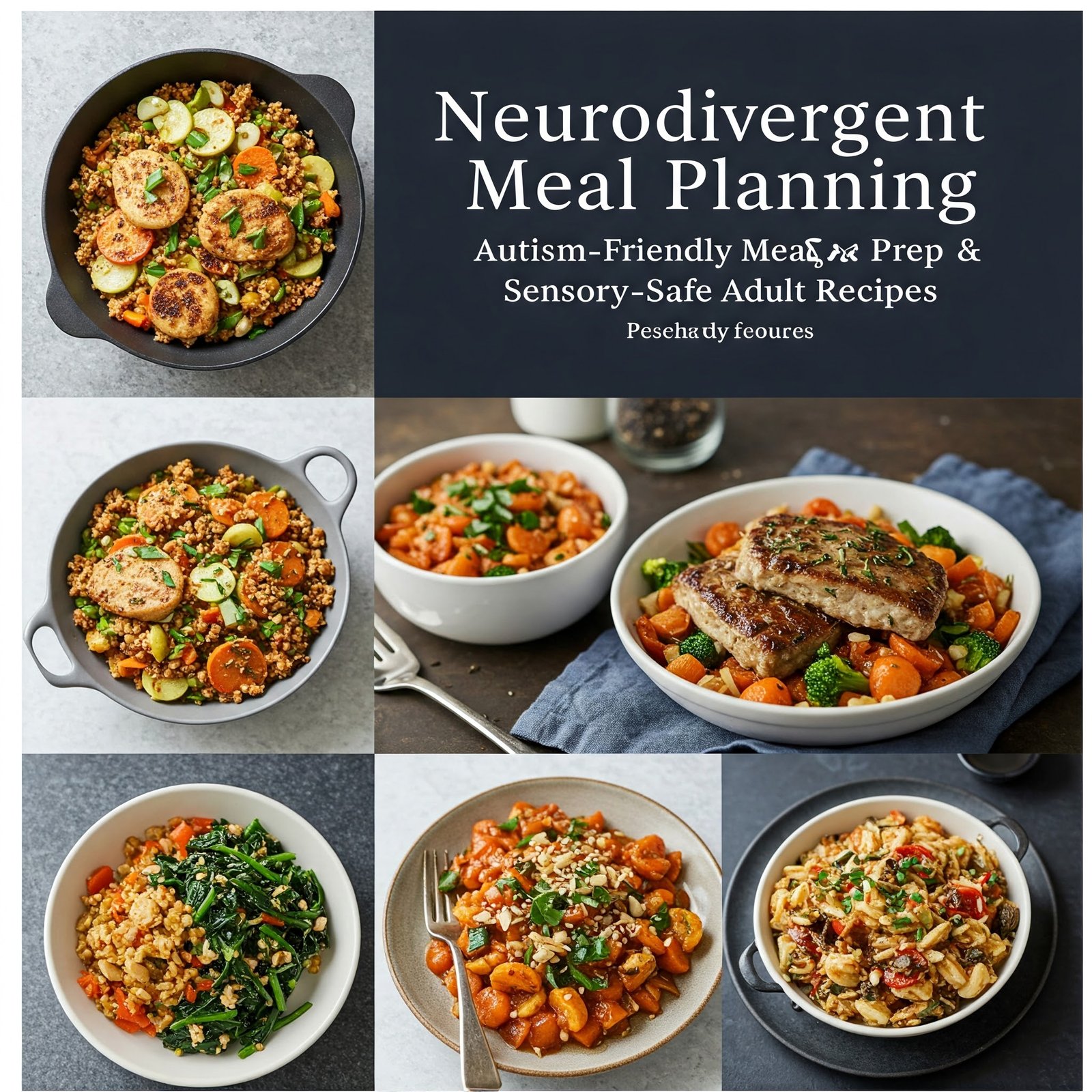Neurodivergent Meal Planning: Autism-Friendly Meal Prep & Sensory-Safe Adult Recipes

Struggling to create meals that suit the unique sensory needs of autistic adults? 


Neurodivergent meal planning focuses on reducing sensory overload while ensuring balanced nutrition. For autistic adults, certain textures, colors, or smells can trigger discomfort. 
Why It Matters:
- 70% of autistic adults report food sensitivities linked to texture or smell (Journal of Autism Research).
- Sensory-safe adult recipes prioritize soft, bland, or crunchy options based on individual preferences.
LSI/NLP Terms: Food aversions, texture sensitivity, dietary routines, predictable meals.

Autism-friendly meal prep requires structure and simplicity. Here’s how to start:
1. Stick to Familiar Foods
- Repeat 2-3 favorite meals weekly to build comfort.
- Example: Baked chicken + mashed potatoes + steamed carrots.
2. Batch-Cook Neutral Textures
- Soft, non-sticky foods (e.g., oatmeal, scrambled eggs) are often preferred.
3. Use Visual Schedules
- A picture-based meal plan reduces anxiety about “what’s next.”
LSI/NLP Terms: Routine-based cooking, visual supports, texture consistency.

These recipes avoid common triggers like strong spices or mixed textures:
1. Creamy Coconut Rice Pudding
- Smooth, mildly sweet, and easy to customize with raisins or cinnamon.
2. Baked Chicken Tenders with Sweet Potato Fries
- Crunchy outside, tender inside—no overwhelming seasoning.
3. Veggie Pasta with Butter Sauce
- Soft noodles + steamed veggies (no lumps or surprises).
Fun Fact: Crunchy foods can provide calming oral sensory input!

Problem: Resistance to new foods.
Solution: Introduce one ingredient at a time alongside a “safe” food.
Problem: Meltdowns during meals.
Solution: Create a quiet, dimly lit eating space to reduce sensory input.
LSI/NLP Terms: Food chaining, sensory-friendly environment, gradual exposure.

- Weekly Plan: Prep meals on Sundays to avoid daily stress.
- Involve the Adult: Let them choose between 2-3 options to foster independence.
- Use Timers:
Predictable cooking times reduce anxiety.
Stat: 85% of neurodivergent adults thrive with consistent meal routines (Autism Parenting Magazine).

Q: What are autism-friendly meal prep tips?
A: Focus on texture consistency, use visual schedules, and batch-cook familiar foods to reduce stress.
Q: How do sensory-safe recipes help autistic adults?
A: They minimize triggers like strong smells or mixed textures, making meals enjoyable and calming.

Neurodivergent meal planning isn’t about perfection—it’s about creating a stress-free, sensory-safe experience. 




 | Your Climate Hacktivism Guide
| Your Climate Hacktivism Guide








 Adaptive Sportswear for Prosthetics & Mobility Aid Athleticwear: Empower Every Move
Adaptive Sportswear for Prosthetics & Mobility Aid Athleticwear: Empower Every Move 